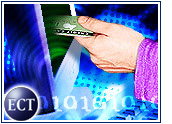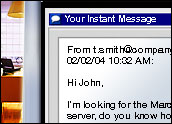
Today’s teenagers have powered the ongoing success of apparel seller Abercrombie & Fitch and music heavyweight MTV, among many other brands — but the vast majority of e-tailers have long ignored the buying power of this group of consumers.
That neglect is shortsighted, say industry experts who track and work in the youth market. Last year, people between the ages of 12 and 19 spent US$170 billion, Teenage Research Unlimited found. And teens spend an average of $264 per week, according to the “Coinstar Teens Talk Poll: Teens Report on Money, Spending and Buying” report, published in September.
In total, members of Generation Y — people born since 1977 — have annual income of $211 billion, a Harris Interactive poll determined. Each year, this group spends about $172 billion of that income. And the amount spent online is growing: This year, people aged 8 to 21 spent 14.5 percent of their income online, versus 11.8 percent last year, John Geraci, vice president of youth research at Harris Interactive, told the E-Commerce Times. “The average amount of money spent is $448,” he said.
Also, even though teens continue to spend most of their money in brick-and-mortar establishments, they rely extensively on the Internet for prepurchase research, Geraci added.
“They are certainly going to walk into a bricks-and-mortar store more educated than they have been in the past,” he said. “They know what they’re talking about. They’re getting more demanding of salespeople.”
Surf n’ Shop
One disadvantage of selling online to teens is this market’s general lack of credit cards. However, some e-tailers have created prepaid cards that can be sold in bricks-and-mortar locations and then used to purchase products online. For example, digital music retailer Napster recently unveiled the Napster Card, which provides 15 downloads for $14.85. The card is slated to be sold in almost 14,000 retail spots by mid-November, according to the e-tailer.
Likewise, AOL has teamed up with Visa Buxx to offer the AOL Cash Card to teen users of AOL 9.0. The card looks like a traditional Visa card — featuring the user’s embossed name and a magnetic stripe — and can be used anywhere Visa is accepted and at ATMs, according to AOL. The card, which is issued by Bank One, does not carry an annual fee for AOL users.
“Visa Buxx has been around a while,” Marc Waldman, creative director at Marketing Partners, told the E-Commerce Times. The Bethlehem, Pennsylvania-based firm develops marketing strategies for credit unions — and has developed a program to help credit unions tap into this vast potential market. “I think it’s a real need,” said Waldman. “[Financial institutions] are starting to realize they need to be in this.”
News to Many
However, a problem exists: Although prepaid cards have been around for a while, many parents and teens are unaware of them.
“In a survey, resulting data showed very little awareness that these cards exist, and even among those that are aware, they get very little use,” Harris Interactive’s Geraci said. “There hasn’t been a lot of consumer-level marketing.”
Perhaps with some marketing muscle behind them, the cards’ popularity will increase.
“That would avoid me having to give Jackie my credit card. As long as it’s a prepaid card with a limit, that’s great,” said Rosemary Horan of Orlando, Florida, a 51-year-old mother of a 16-year-old-girl, in a conversation with the E-Commerce Times. “You could use it as a gift. That way, you’re not tying them to a particular store.”
Attractive Autonomy
Indeed, prepaid cards give teens the same autonomy over online purchases as those made in retail stores. Borrowing a parent’s credit card is “not the way teenagers want to buy,” said Geraci. “The child is in a situation where they’re seeking approval for every transaction. When they’re going to the mall, they not doing that.”
Also, Horan said, it is often inconvenient for a parent to relay credit-card information from work or while away from home, thus further frustrating or delaying a teenager’s purchase.
In fact, two-thirds of 13- to 17-year-olds who use the Internet claim to be very or somewhat interested in a prepaid card that parents can allocate money to and manage online, according to an AOL Money Management Skills survey conducted by Opinion Research Corp. for the ISP.
Marketing Mavens
In order to raise awareness of — and sales of — prepaid cards, retailers need to pitch them simultaneously to parents, who are seeking security and spending limits, and to teens, who are looking for coolness and convenience.
In the meantime, e-tailers that rely on teens continuing to borrowing their parents’ credit cards should take to heart a similar lesson: Whatever the product, online sales must incorporate marketing to both adult and child.
“You’re not just marketing to the kid anymore. When you’re marketing to the kid online, you’re inherently marketing to the parent,” Geraci said. “Smart retailers will not only show the product, they will give kids the ammunition they need to justify the purchase to the parents.”
In some ways, it seems, times have not changed at all. The medium may be different, but the message is the same as it ever was.






















































Social Media
See all Social Media